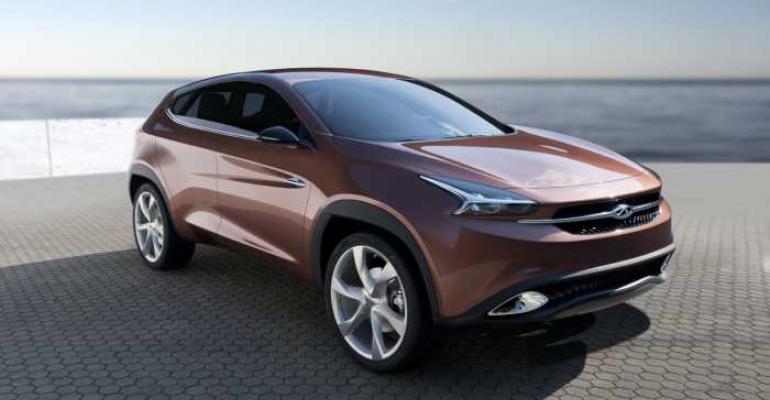WUHAN, China – Automotive design in China is still in its infancy, but the country’s growing power and influence will have a major impact on future vehicles, automotive designers working in China predict.
“Asia will definitely inspire many trends,” notes Diane Kloster, director-color and trim at the Volkswagen design studio in Shanghai. Chinese tastes already are felt in the food and cosmetics, and in their cars Chinese customers have demonstrated an interest in functionality, quality and safety.
“Fabrics used inside the car have to be lighter and should have a touch of sensuality,” Kloster says during a panel discussion of automotive design at the Global Automotive Forum here. “Chinese consumers are looking for a natural quality that offers joy and freedom from anxiety.
“Color is moving lighter. It’s a new kind of luxury,” Kloster says, noting young Chinese designers are bringing with them elements of the country’s strong artistic tradition with its respect for light.
“I think there is an incredible amount of talent in China. But experience is a factor,” says James Hope, design director at local automaker Chery. “Industry’s boomed, but finding designers that have put vehicles in production is very small.”
Chinese designers are putting aside the utilitarian tradition of the past half-century and quickly catching up with current design trends in the global industry, says Hope, who works in Shanghai. The world’s largest city is emerging as the country’s center of automotive design due to its concentration of major studios companies have set up.
In 2013, the Chery TX concept SUV, designed in the automaker’s Shanghai studio, was named Concept Car of the Year for 2012 by the U.K. publication Car Design News. It was the the first time a design from a Chinese studio won the award.
Hope, who worked on exterior design for General Motors before joining Chery in 2012, believes the design of indigenous Chinese cars has improved dramatically in recent years.
“There (once) was quite a gap between Western and Chinese automakers. But if you walked through the Beijing Auto Show this year, you could see some of the Chinese brands were surpassing some of the Western brands,” he says. “I attribute it to how fast the industry is moving.”
Chinese car designs “were a joke, and they’re not anymore. Chinese automakers have made massive improvements,” Hope says. He concedes Chinese companies imported “expat” car designers to help with the transition, but adds a lot of talent now is coming out of local design schools.
Guy Burgoyne, chief director-interior design at Geely, says designers in China are following the broader trends that are reshaping the industry.
When he began his career more than 20 years ago, the job of the interior designer was “to cover the holes in the sheetmetal.” Interior design now is a critical part of any vehicle, he says.
“Cars are also part of the fashion industry. The car says something about the driver. A plastic bag or a handbag from Vuitton does the same thing, don’t they? The plastic bag for some is (the) means to an end, but for others the journey is as important as the destination.”
But there are 250 components in the interior of the car that need the designer’s touch, compared with 50 on the outside. “Let’s talk about finding the balance,” Burgoyne says.
Exterior styling still is a statement, Hope says. But at Chery, color and trim is becoming the most important element of the car’s design, notes Hope, who says his studio uses a horizontal organization chart where exterior, interior and color and trim are equal.
At the same time, Hope says, designers have to have address the rapid changes in technology that are reshaping the automobile in China and are attracting keen interest from customers.
The human-machine interface has become much more important for designers in an era of touchscreens, organic LEDs, occupant-recognition technology, touch-sensitive surfaces and augmented-reality features that bring a new dimension into the cockpit of a vehicle, he says.
Magnus Aspegren, head of BMW Design Works USA in Southern California, notes designers at the same time must convince consumers they still want to drive.
“We’re selling this incredible experience” of freedom and joy, he says. “It moves and responds to your needs and wants. As car designers, we felt that passion and joy.”
However, megacities with millions of residents run counter to the automobile’s century-old promise of greater freedom. “You don’t want to drive among 23 million people,” Aspegren says of Shanghai’s population. “Ninety percent of the drivers today are not able to feel the excitement. That’s unfortunate.”
Aspegren says the challenge of megacities likely requires a different model that includes multiple forms of transportation, including public transportation, while maintaining the pleasures that come with climbing behind the wheel of a well-executed automobile in China or anywhere else.





